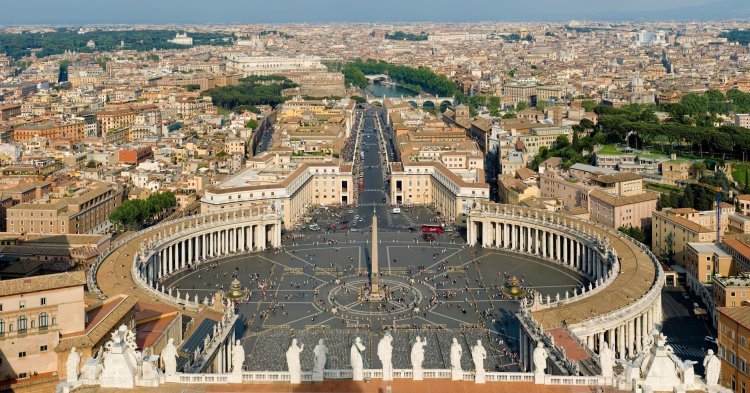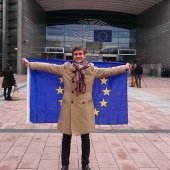The European continent is home to five microstates that have succeeded at preserving their independence through geopolitical turmoil and even bloodshed that has shaken Europe for more than four centuries. The principalities of Monaco, Andorra, and Liechtenstein, the Republic of San Marino, as well as the Vatican City, all have their historical processes of independence. They all have more or less strong relations with their neighbours and they have international influence of their own, but none of them have joined the European Union. Why?
Microstates linked to their larger neighbours
Survivors of warlike and expansionist tremors, these countries have mainly got their own bits of sovereignty from monarchical feudal systems that had difficulty adapting to modernity and the wider world. Even if they all are independent, a distinguishing characteristic of these states is their great dependence on their neighbours.
Once occupied by revolutionary and then Napoleonic France, Monaco signed a protective treaty of friendship with Paris at the end of World War I, guaranteeing French military protection in exchange for total alignment with French economic and foreign policy. Andorra, to which Charlemagne granted independence in 780, has a unique system of two co-princes. The holders of the title are the Bishop of Urgell and the French head of state.
The Republic of San Marino, the oldest in the world, dates back to 1600 and is enclaved within Italy who is responsible for its military defence. Liechtenstein, for its part, acquired independence in 1806 thanks to Napoleon’s victories against the Holy Roman Empire. However, Liechtenstein quickly placed itself under the protection of its Swiss neighbours. Finally, Vatican City was created in 1929 by the Lateran Treaty, under pressure from Benito Mussolini, to recognise the sovereignty of the Holy See on territory enclaved within the Italian capital.
The foreign policy of most of these states is linked to that of the state that guarantees their defence and security. Like the insular microstates of the Pacific Ocean, they have therefore been slow to join international organisations such as the United Nations. Liechtenstein joined in 1990; San Marino in 1992; and Monaco and Andorra in 1993; whilst the Vatican, owing to its unique character, is not a member of the UN.
More or less close relations with the EU
These five states may be arranged in three categories according to their relations with the European Union. First of all, Monaco, Andorra, and San Marino have in common a specific relationship with the Union. This specificity is not at all surprising because their “defending” states have been members of the EU since its inception.
The fact that Monaco joined the EU customs union at the same time as the founding member states in 1963 is thanks to customs agreements made with France a century earlier. Andorra and San Marino, for their part, signed these agreements in 1991. However, since 2009, the EU has given fresh breath to relations with these three neighbours, taking into account the “small territorial dimension” of these countries as it proposed a common framework to them.
In 2013, after numerous discussions on the evolution of relations between these four entities, and given the particular situation of the economies concerned, European institutions recommended the signature of several association agreements with these three countries. Negotiations between the four entities began at the start of 2015. Currently, while the question of free movement of goods is agreed, and that of free movement of capital and services under discussion, the opening of borders to individuals presents size-related differences, especially with regard to certain legislation promoting national citizen preference for private and public jobs.
In 1995, Liechtenstein became a member of the European Free Trade Association – a strictly economic institution bringing together Switzerland, Norway, and Iceland. As such, it also joined the European Economic Area which integrates the EFTA and the EU in a common market, with the exception of the Swiss Confederation. Liechtenstein, therefore, benefits from preferential economic and commercial relations with the EU. The Vatican, for its part, only has a customs cooperation arrangement with Italy.
The euro and Schengen: Tools of differentiated integration
While the obligation of adopting the common currency only applies to (some) EU member states, some microstates have made the choice to abandon their national currency, following different arrangements. The customs union agreement signed between France and Monaco in 1865 also contained a monetary agreement concerning the use of the franc in Monaco. In 2001, a new agreement substituted the euro for the franc.
While San Marino’s 1999 request to adopt the common currency was easily approved by the European authorities, this was not the case for Andorra. Disagreements on fiscal matters between the Pyrenean principality and Brussels blocked agreement until 2011 when Andorra la Vella decided to concede to European demands. However, putting the Andorran coins into circulation was delayed. Brussels refused the designs on the national side of the 10, 20 and 50 cent coins proposed by the Principality, as they represented Jesus Christ. The symbol was deemed contrary to the principle of religious neutrality. Once the design was changed, the coins were put into circulation in 2015.
In 2000, the Vatican signed an agreement with Brussels to allow it to adopt the common currency. Thanks to the agreement, Vatican City has the right to mint one million euros per year. As for Liechtenstein, it is Switzerland that defends the country’s fiscal and monetary interests on the international arena, as per the monetary union agreement signed in 1924. Therefore, the Swiss franc is the currency of the Principality. When it comes to the Schengen Area, only Liechtenstein is a member, having acceded in 2011, together with other EFTA countries. Monaco respects Schengen rules as a consequence of its customs union with France. San Marino and the Vatican, enclaved within the Italian territory, are also de facto members of the Schengen Area, as they keep their border open to European citizens. However, Andorra maintains controls on its borders and the obligation of visas and passports for non-nationals.
Despite more or less close relations with European institutions, no microstate currently envisages full EU membership. This is despite the fact that generally social democratic or ecologist parties favourable to EU accession have a presence in the countries’ local parliaments. The main reason why the idea of EU accession has not gained currency in the microstates is that the argument of economic development, a cornerstone of the candidacies of Western Balkans countries, for example, doesn’t have the same weight in these developed countries. On the contrary, these governments are afraid of losing their autonomy, because of a majority system weighted according to population, a system that is clearly disadvantageous to them.
However, it is still interesting to note that a referendum was organised in 2013 by San Marino on whether to submit an application for EU membership. The narrow “Yes” victory was, nevertheless, not enough because the result was invalidated by the low turnout. As such, the question of Sammarinese EU accession is still suspended.



Follow the comments: |
|
